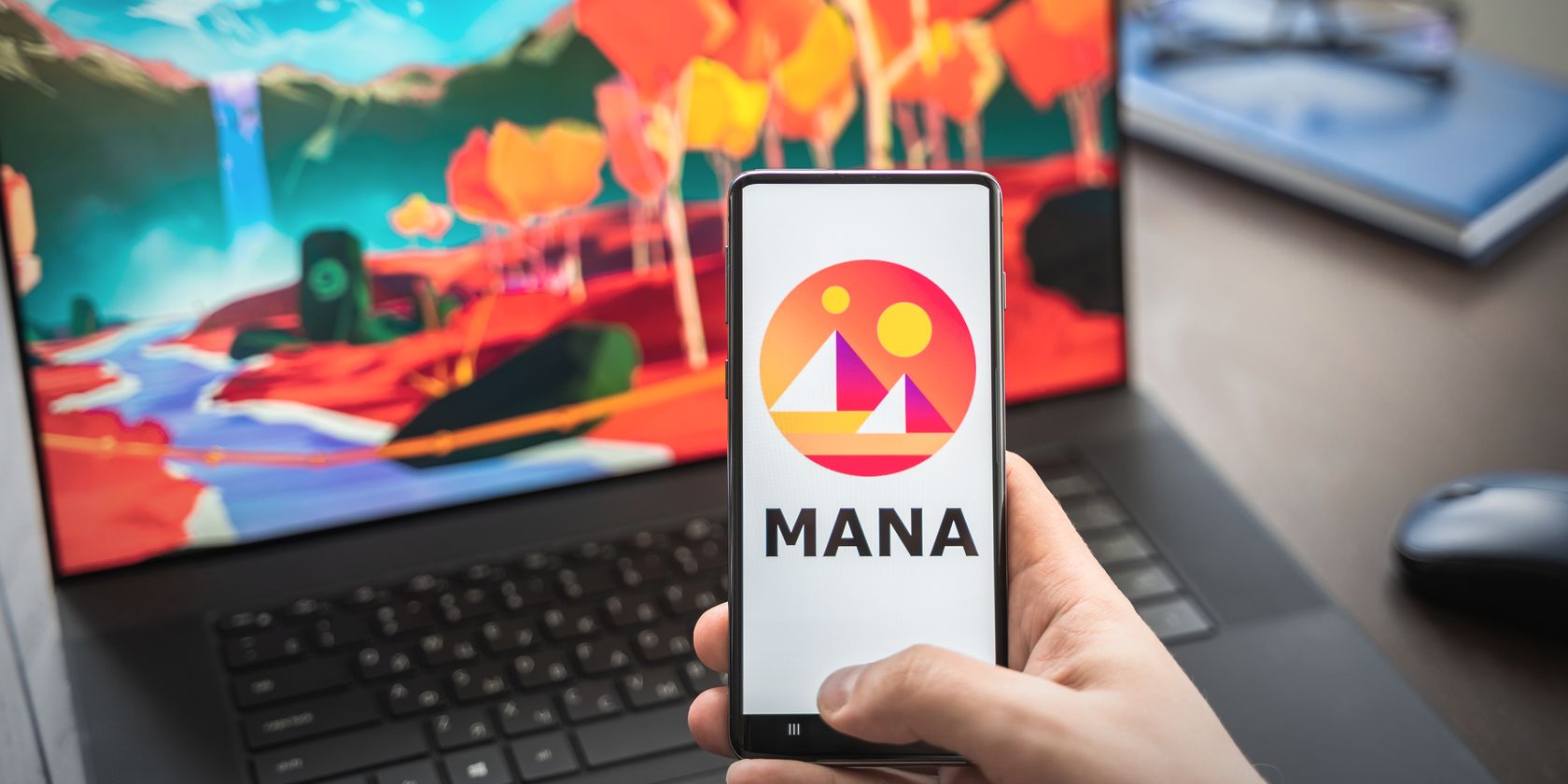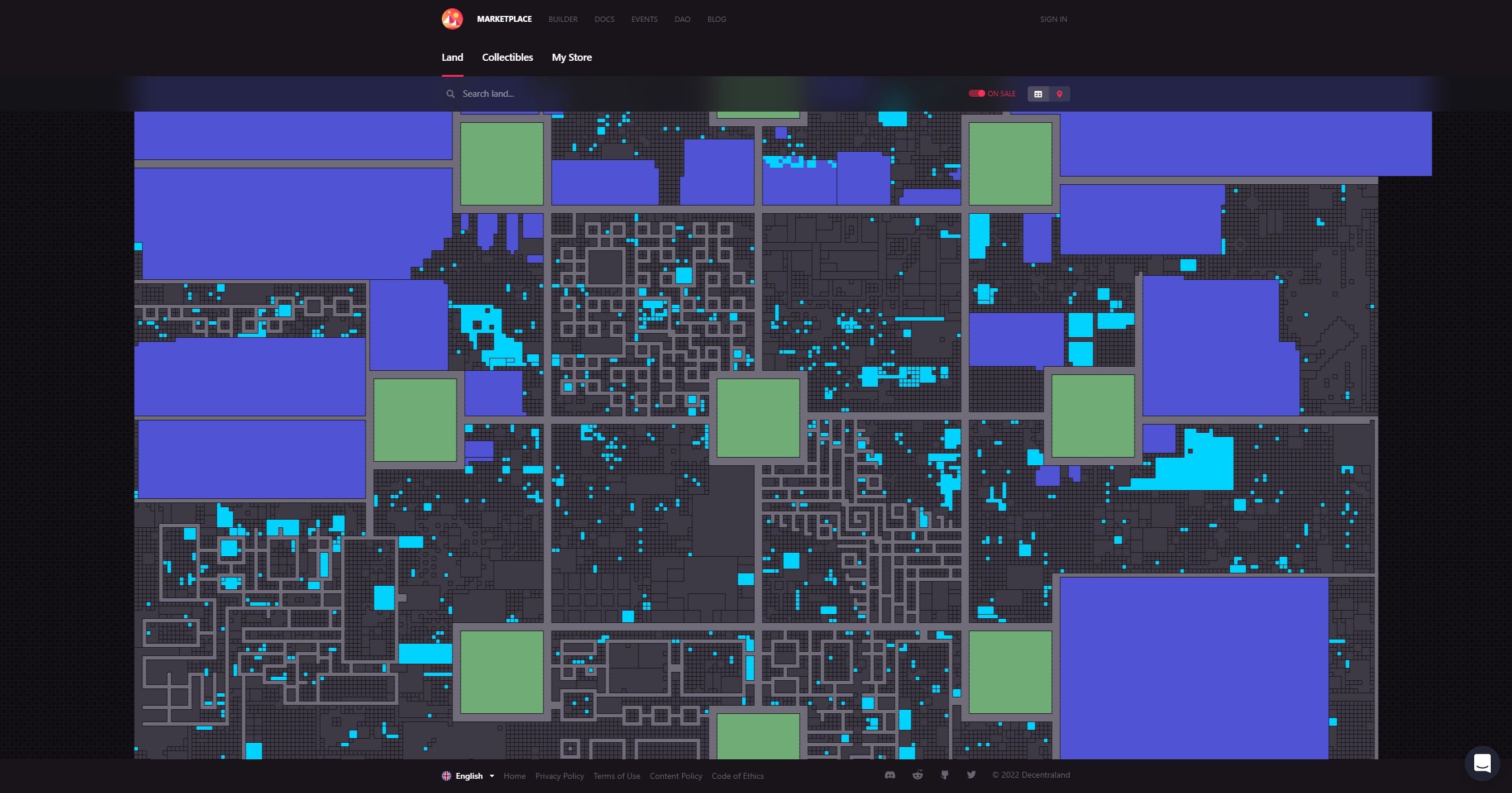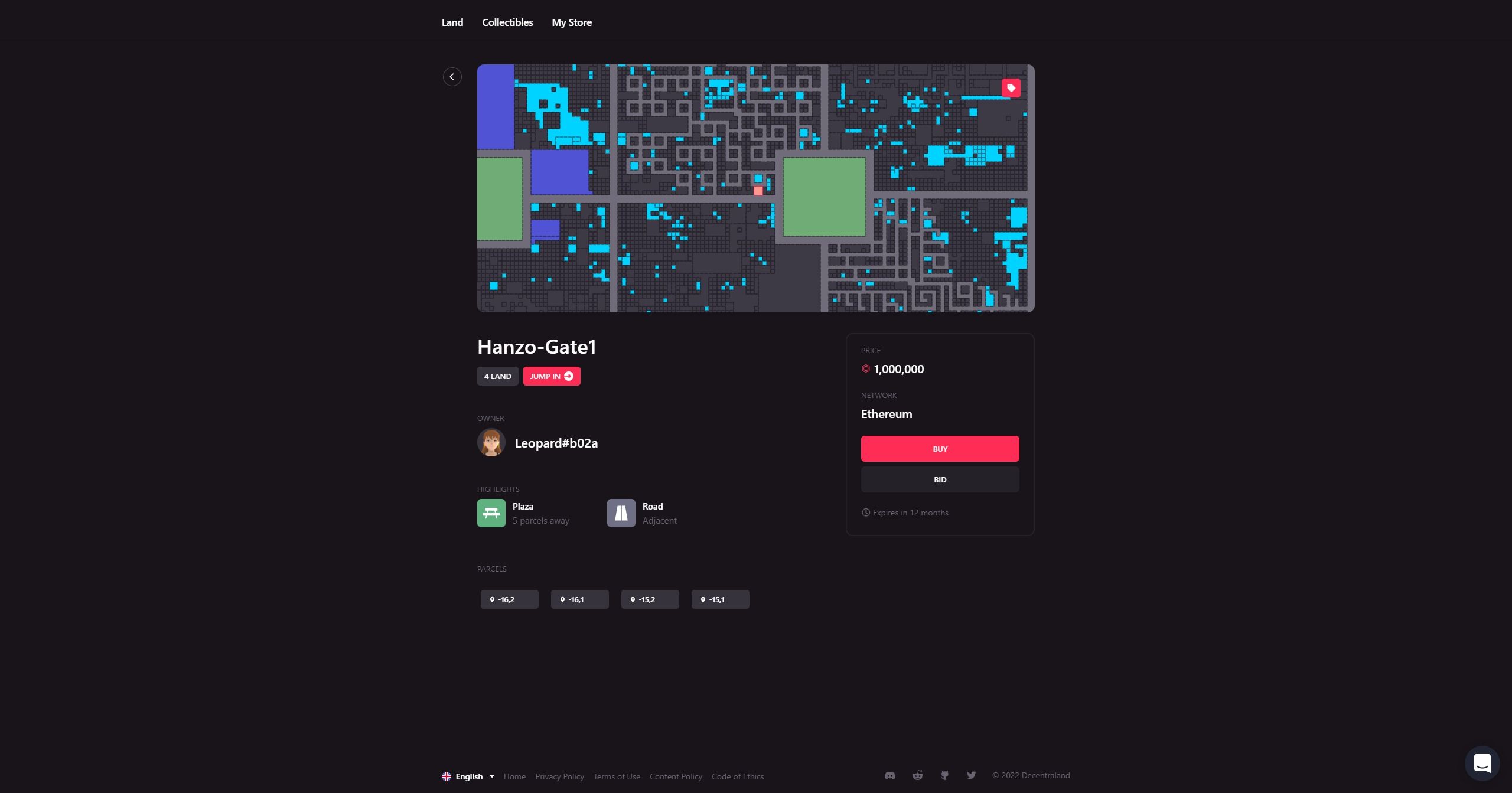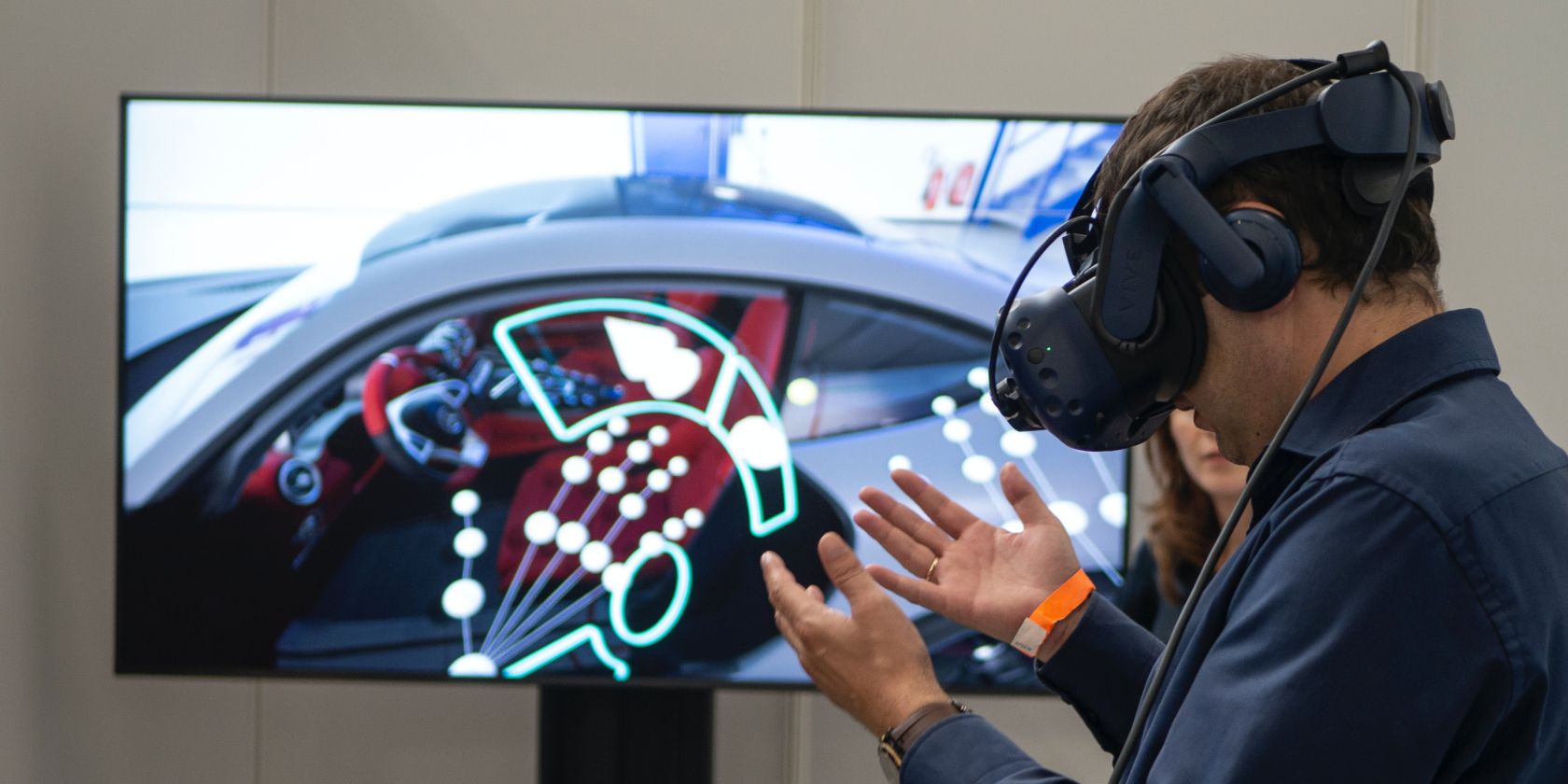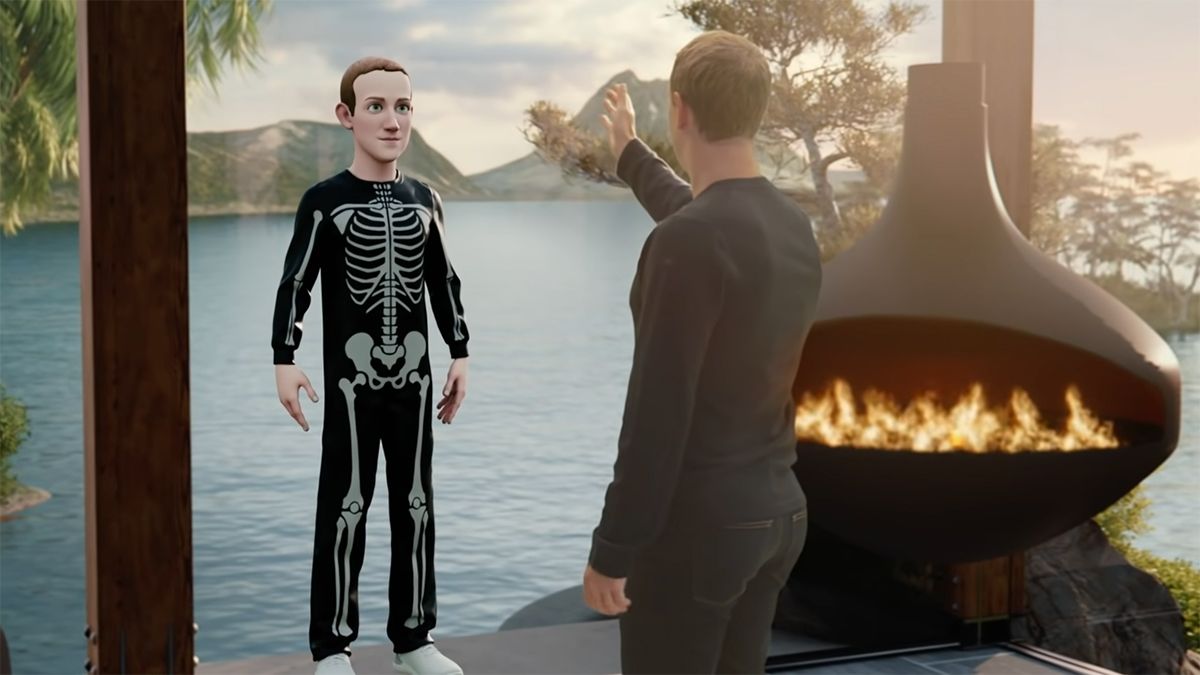Decentraland (MANA) is a virtual reality platform powered by the Ethereum blockchain. It allows users to create, experience, and monetize content and applications. It's based on the metaverse concept from Neal Stephenson's book Snow Crash.
However, there is more to this blockchain project than just VR. But before we delve into the details, first, let's get straight to what Decentraland is and how it works.
What Is Decentraland?
Decentraland is a virtual reality platform powered by blockchain technology, where users can create, experience, and monetize content and applications. It's not as simple as that, though.
Decentraland is one of the first projects building a new kind of world—a decentralized internet. Unlike traditional online spaces such as Facebook or Twitter, in Decentraland, people will truly own their digital assets. And like any other virtual reality (VR) platform, you can explore and communicate with people from all around the world and immerse yourself in social VR experiences. But what makes this project even more revolutionary is its use of blockchain technology to power everything from buying land to making transactions on the platform itself.
The goal of Decentraland is to create an open-source system for users to build whatever they want within this decentralized virtual space, whether it be virtual stores, online casinos, social media platforms, or anything else you can imagine.
How Does Decentraland Work?
The Decentraland project (MANA) aims to create a virtual shared space owned by its inhabitants and controlled by no one else. Unlike traditional social media platforms, on Decentraland, you'll own your digital content. That means that if you create an avatar on Decentraland, you can sell it or give it away to another user.
It is a decentralized platform built using blockchain technology, which allows for the creation of augmented reality lands where users can buy, trade, or rent plots of land. Digital assets, like land, are stored as NFTs (non-fungible tokens) on the Ethereum blockchain.
As a decentralized virtual reality platform, Decentraland lets its users create their own VR worlds, monetize content, and even earn Decentraland tokens by hosting other users in their VR world.
Decentraland runs its own blockchain, called Ethereum Aland, and allows users to make custom transactions on the blockchain. It is unique in that content ownership is completely secure and censorship-resistant—no one can change or censor content inside Decentraland because it's built on a peer-to-peer network with strong cryptography.
Here are some things you can do in Decentraland: It's a place to date, buy or sell goods, and use crypto to enter a VR world where you can vote on how the world is built.
Decentraland drives new kinds of real-world value creation beyond money and markets, like sharing online spaces in VR with your friends and being able to interact with them there in new ways.
Benefits of Decentralizing Virtual Reality
Decentralized virtual reality has a wide range of benefits and advantages, including:
Freedom
Virtual reality is an immersive and interactive experience. And as technology advances, so does the need for better ways to manage the content being created. In Decentraland's space, users own their digital assets, giving them complete ownership and freedom to do whatever they want with them—from trading them to selling them or keeping them forever.
Ownership
Decentraland uses blockchain technology to power everything from buying land to making transactions on the platform itself. It's a revolutionary approach because it gives users what they deserve—ownership of their digital assets without having to worry about a centralized company taking control of it all or charging a hefty price for items.
In other words, Decentraland democratizes virtual reality by making its usage accessible to everyone while also ensuring that people have full ownership over their creations.
Privacy
Decentraland's virtual reality is designed to be completely private. On Decentraland, you have complete freedom over your experience—no one else can control what you're doing inside of VR. This is in stark contrast to the metaverse, which is still very dependent on centralized servers and technologies.
Is Decentraland the Same as the Metaverse?
The simple answer to this question is this: Decentraland is a type of metaverse project like Sandbox, Enjin, Bloktopia, and Star Atlas. It is, therefore, not the metaverse, but is certainly involved in the conversation. While ideas about the metaverse and Decentraland are similar in many ways, namely that they are both virtual reality platforms, some key differences between the two should be noted.
The first difference is that the metaverse is still a concept, which some, like Meta's CEO, Mark Zuckerberg, believe might take another 10 years before it materializes. However, there is no single defining agreement on what the metaverse is or what it will be. For many, the metaverse is a virtual ecosystem within which different virtual worlds would function. In the metaverse, users will access diverse services and apps, offering many applications and use cases. So, Decentraland is, then, a sneak peek of the larger metaverse ecosystem to come.
Another difference is that metaverse would be based on a centralized server system. This means that the entirety of the virtual world exists online via a single computer system. Decentraland, on the other hand, is based on a distributed ledger system, meaning that it uses blockchain technology to store information on a network of decentralized computers rather than one sole server. This allows for increased security and reliability of data storage for users.
To sum up, while Decentraland may be seen as the metaverse in some ways, there are also key differences between the two. The metaverse is still a concept to be built, while Decentraland is the first popular iteration of that idea.
Decentraland Is Not the Same as the Metaverse
Even though Decentraland is a metaverse project, it still has some clear differences from the idea of the metaverse as envisioned by those like Mark Zuckerberg.
All in all, when it comes to Decentraland, there's still plenty to be excited about. We know that developers and content creators are already jumping on board, and we can expect to see a lot more activity as the platform evolves. If you want to get involved with MANA, now seems like a good time.

